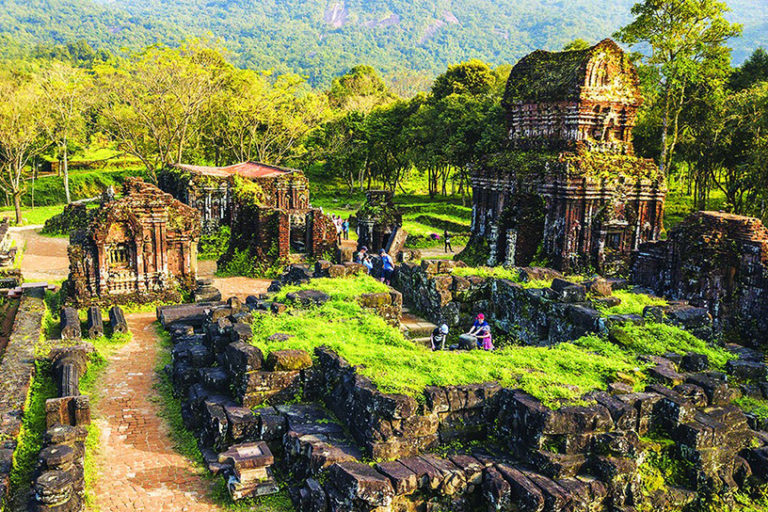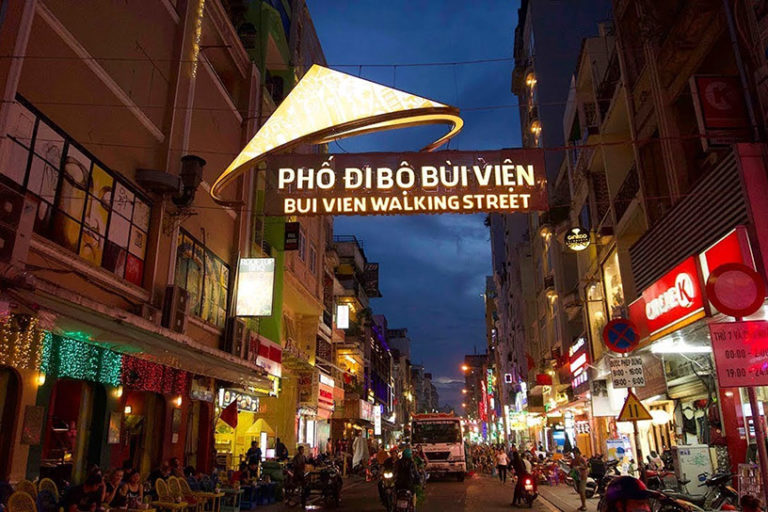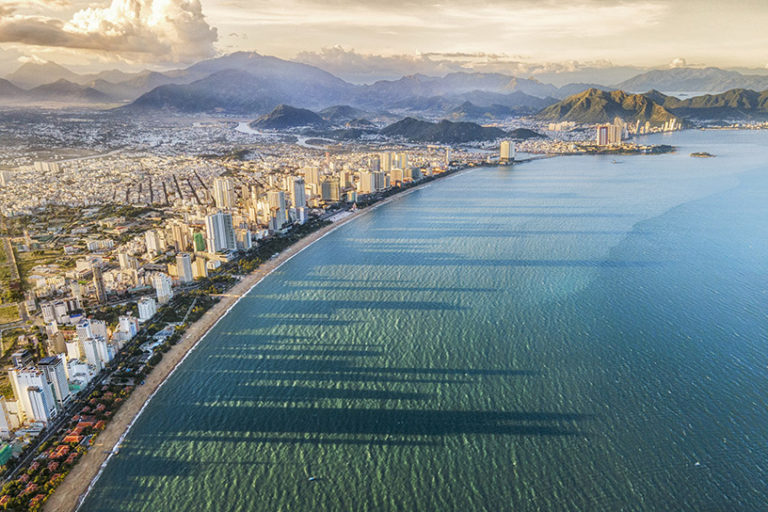24/7 Support: +84 903445750
Top 9 Places To Visit in Phnom Penh
The capital Phnom Penh is one of the most important destinations in Cambodia, second only to the Angkor temple complex. Phnom Penh has many historical attractions closely linked to Cambodia’s development and struggle for independence. Here are the nine most prominent attractions in Phnom Penh.
Phnom Penh Royal Palace
The Phnom Penh Royal Palace is a must-visit destination when traveling to Phnom Penh. This complex was initiated by King Norodom I in 1886 when the capital was officially moved to Phnom Penh. Most of the buildings were completed before World War I, with the involvement of French and Thai architecture.
This is a complex of buildings constructed to serve the living and activities of the King, the royal family, and foreign dignitaries. Additionally, it is the venue for royal court sessions, diplomatic ceremonies, and royal festivals.
The architectural complex of the Royal Palace stands out with traditional Khmer-style roofs and splendid decorative patterns. The palace includes a complex of relics—the Royal Palace with the Silver Pagoda and a combination of many other architectural works along with gardens. The building, located next to the riverbank, impresses visitors.

National Museum of Cambodia
The National Museum of Cambodia, located in the capital city of Phnom Penh, is the largest museum of cultural history and archaeology in the country. The museum’s main architecture blends French and Cambodian styles. Inside, the museum houses many artifacts, including the world’s largest collection of Khmer art, treasures reflecting Cambodia’s culture and history through various periods, and documents detailing the nation’s struggle for independence.
How to get to the National Museum Phnom Penh?
The National Museum of Cambodia is situated between Street 178 and Street 13, near the Royal Palace. It is open to visitors from 8 AM to 5 PM every day. The entrance fee for each visitor is 10 USD, with an additional 5 USD for an audio guide.
When is the best time to visit the National Museum?
You can visit the National Museum at any time, but since it is quite close to the Royal Palace complex and the Silver Pagoda, you can combine visits to these three sites in one day. Visiting in the late morning or afternoon is also a good idea to avoid the intense heat outside.
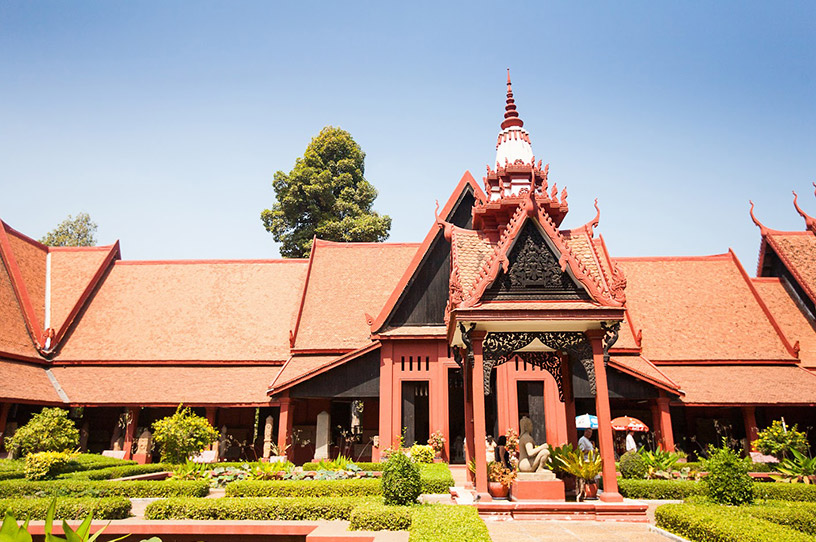
Wat Phnom Temple
Wat Phnom is located on a 27-meter-high hill in the center of Phnom Penh. The temple was built in 1373 and is one of the oldest and most important temples in Phnom Penh. “Wat” in Khmer means temple, and “Phnom” means hill. The steps leading up to Wat Phnom are flanked by statues of lions and the mythical serpent Naga. Wat Phnom is considered a highly sacred and important place for the people of Phnom Penh. Many visitors and locals come here to worship, pray for luck and success, so be sure to dress respectfully and show reverence.
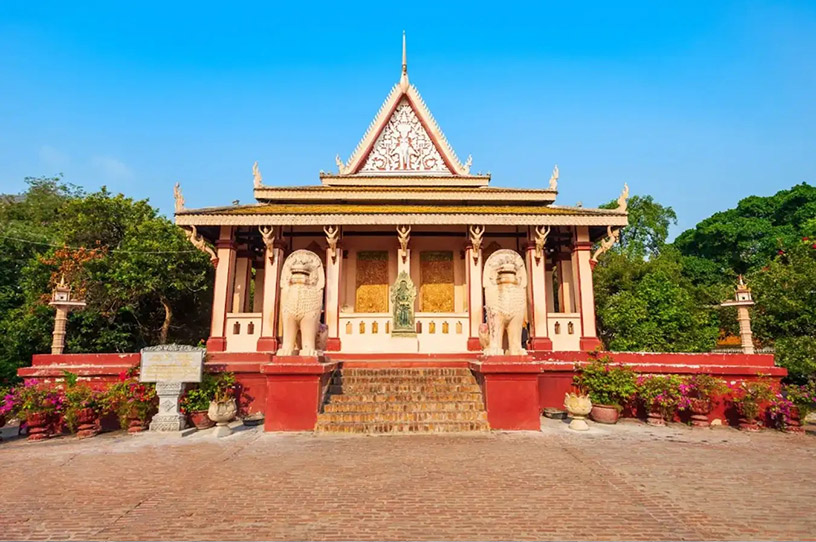
Wat Ounalom Temple
Wat Ounalom is located on Sisowath Quay right on the banks of the Tonle Sap River. The temple was built in 1440 during the reign of King Ponhea Yat. The temple is a large complex that includes various areas such as the main hall, library, and housing for monks. Wat Ounalom is one of the most important temples in Cambodia and also serves as the center of Cambodian Buddhism. This temple complex comprises 44 buildings, each with its own distinct and unique architecture, attracting many tourists. Wat Ounalom is a place where you can pray for health and peace for your family and loved ones.

Golden Pagoda – Silver Pagoda
Located in the heart of Phnom Penh, the Golden Pagoda – Silver Pagoda is part of the Royal Palace complex, Wat Preah Keo Morakat. The large and beautiful temple is both an artistic and architectural marvel, embodying the typical architectural style of Cambodian temples. In 1962, the temple was named Preah Keo Morakat (after a Buddhist devotee who contributed gemstones for its construction) and is currently known as Wat Preah Morakat (Golden Pagoda – Silver Pagoda). Many people often think that the Golden Pagoda and Silver Pagoda are two different temples, but both names refer to the same temple.
The temple is called “Golden Pagoda – Silver Pagoda” because it has 5,329 silver tiles laid on the floor. Each silver tile is handcrafted and weighs 1,125 grams. The temple also houses a solid gold Buddha statue that is 2 meters tall, weighs 90 kilograms, and is adorned with 2,086 diamonds, including a 25-carat diamond on its crown and a 20-carat diamond on its chest.

The temple functions more as a cultural and religious treasure trove rather than a place of worship, as it holds over 1,650 valuable artifacts. All the treasures in the Golden Pagoda – Silver Pagoda were contributed by the Cambodian nobility and royalty, holding great material and spiritual value. Currently, the Golden Pagoda – Silver Pagoda is where the king holds royal Buddhist ceremonies or the Eight Precepts Observance and does not have a residing monk.
Choeung Ek Killing Fields
The Choeung Ek Killing Fields are located 15 km from Phnom Penh, a 30-minute drive from the city center. Alongside the Angkor Wat complex, the Choeung Ek Killing Fields are now one of the most popular destinations for foreign tourists in Cambodia. This site bears the most vivid and painful historical witness to the horrors that occurred in Cambodia under the Pol Pot regime.
Originally an orchard, Choeung Ek was used by the Pol Pot regime as a mass execution site for Cambodians. Although it is now a tourist destination, visitors still feel a stifling and chilling sensation when witnessing countless mass graves and the cruelest punishments inflicted on people.
Additionally, visitors can tour the Tuol Sleng Genocide Museum. Before the Pol Pot regime, Tuol Sleng was a high school. Pol Pot transformed it into a torture camp, prison, and execution center. Inside this former school, weapons of torture, skulls, bloodstains, and photographs of thousands of brutally murdered victims remain, leaving visitors in shock.
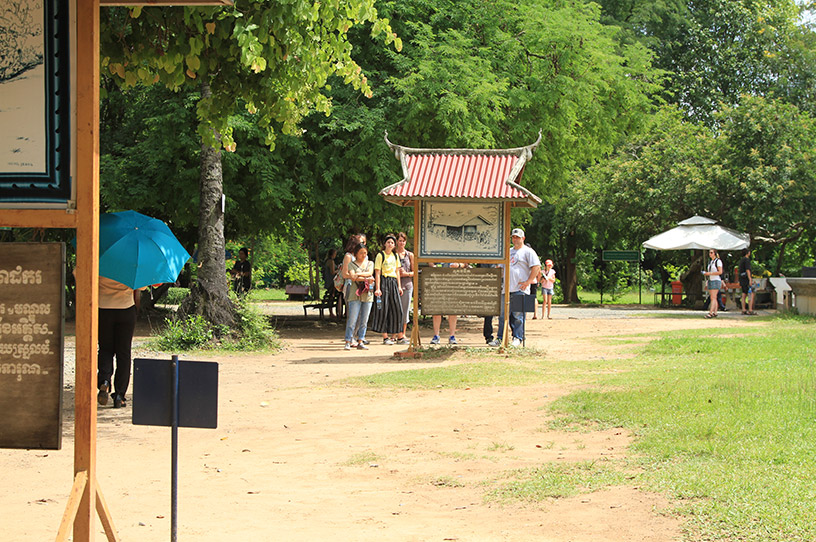
Many visitors leave Choeung Ek Killing Fields with tears in their eyes and a shared sense of sorrow. While the atrocities might be well-known, visiting this place and hearing detailed descriptions of what transpired brings a deeper understanding of the suffering endured by Cambodians. Today, greenery covers the fields, but the pain lingers. The memorial site is filled with sorrowful wreaths left by visitors, hanging along the fence as a small consolation to the unfortunate victims.
Phsar Thom Thmei Market
Phsar Thom Thmei Market (Central Market, also known as New Market) is located at Kampuchea Krom (St. 128), 12252 Phnom Penh. This market is housed in a unique colonial building constructed in 1937, designed by French architect Louis Chauchon.
With its large area and eye-catching architectural design, the market attracts a large number of tourists. It sells a wide variety of goods, from souvenirs, clothing, and jewelry to food. You can find many attractive products that reflect Cambodian culture.
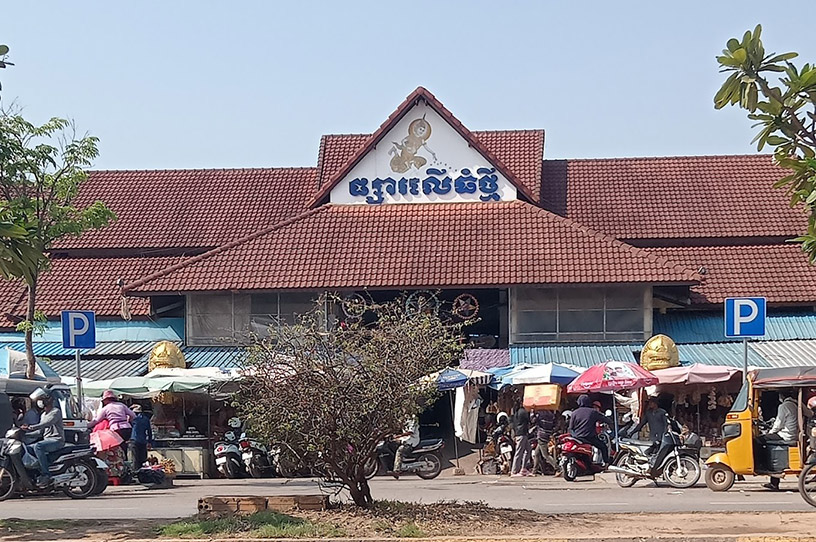
Independence Monument
The Independence Monument in Phnom Penh is located in the city center. It was built from 1958 to 1962 to commemorate the soldiers who fell for Cambodia’s independence and freedom. Due to its prominent location in central Phnom Penh, nearly every visitor to Cambodia stops by this monument.
The Phnom Penh Independence Monument is modeled after a lotus bud and is decorated with the Naga motif, reminiscent of the famous Angkor Wat temple. Additionally, the Independence Monument features a modern fountain with an artistic lighting system, making it even more impressive at night.
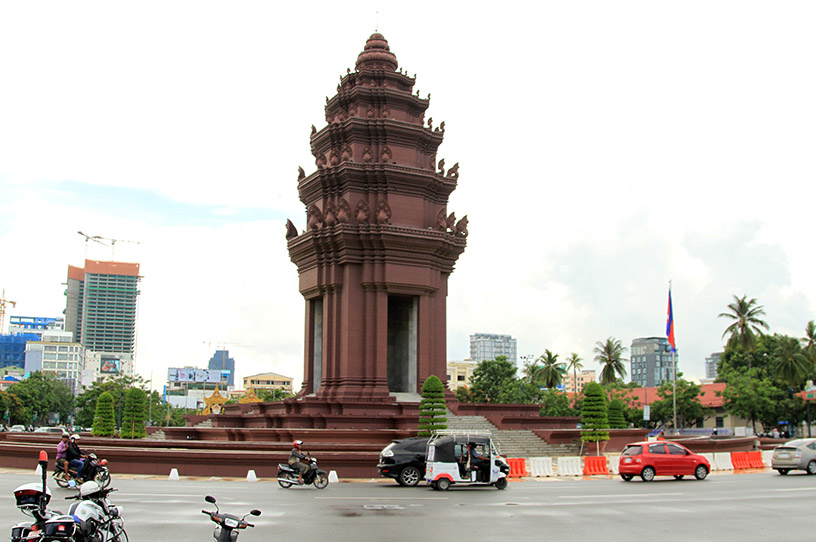
To discover the most beautiful island in Cambodia, see Exploring Koh Rong Samloem Island – Cambodia
Tuol Sleng Genocide Museum
The Tuol Sleng Genocide Museum displays images and documents of the victims of the Khmer Rouge atrocities. Visitors can shudder at the realistic drawings depicting the brutal, blood-stained torture scenes. Originally a high school, the site was converted into Security Prison 21 (S21) by the Khmer Rouge regime in 1975. The former classrooms were turned into prison cells and interrogation rooms, with the torture chamber outside surrounded by an electric fence, making it a place of terror for Cambodians. If you want to explore history and learn about past stories, this is definitely an ideal place for you.

To learn more about attractions in Vietnam and Cambodia, see Best Places To Visit In Vietnam And Cambodia
Conclusion
With the nine fascinating attractions in Phnom Penh mentioned above, you will gain a comprehensive view of Cambodian history and culture. The experiences you witness during your visit will leave a lasting impression on your mind, making you remember this intriguing trip to the land forever. To visit all the tourist spots in Cambodia, check out our all-inclusive tour packages.

